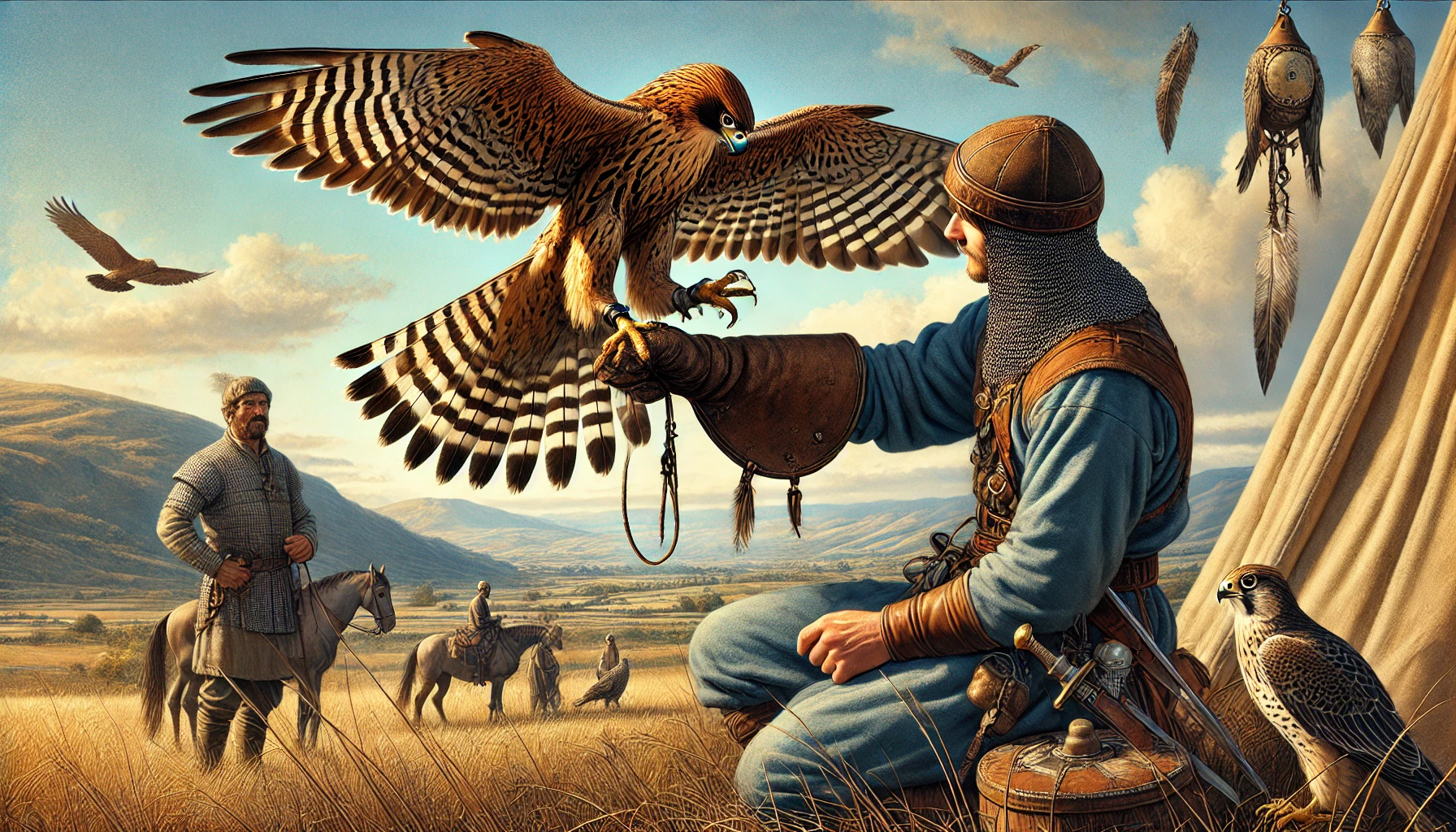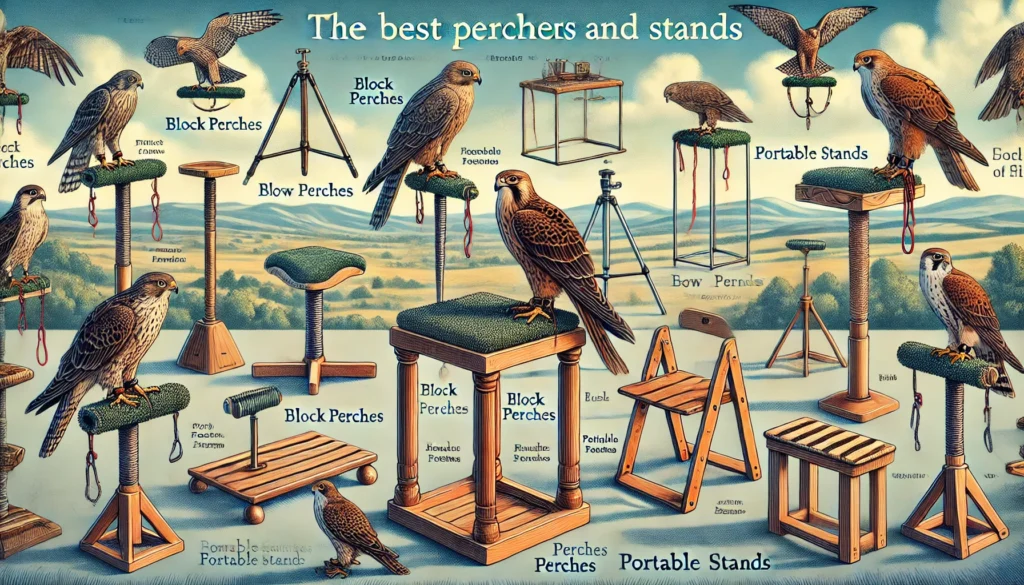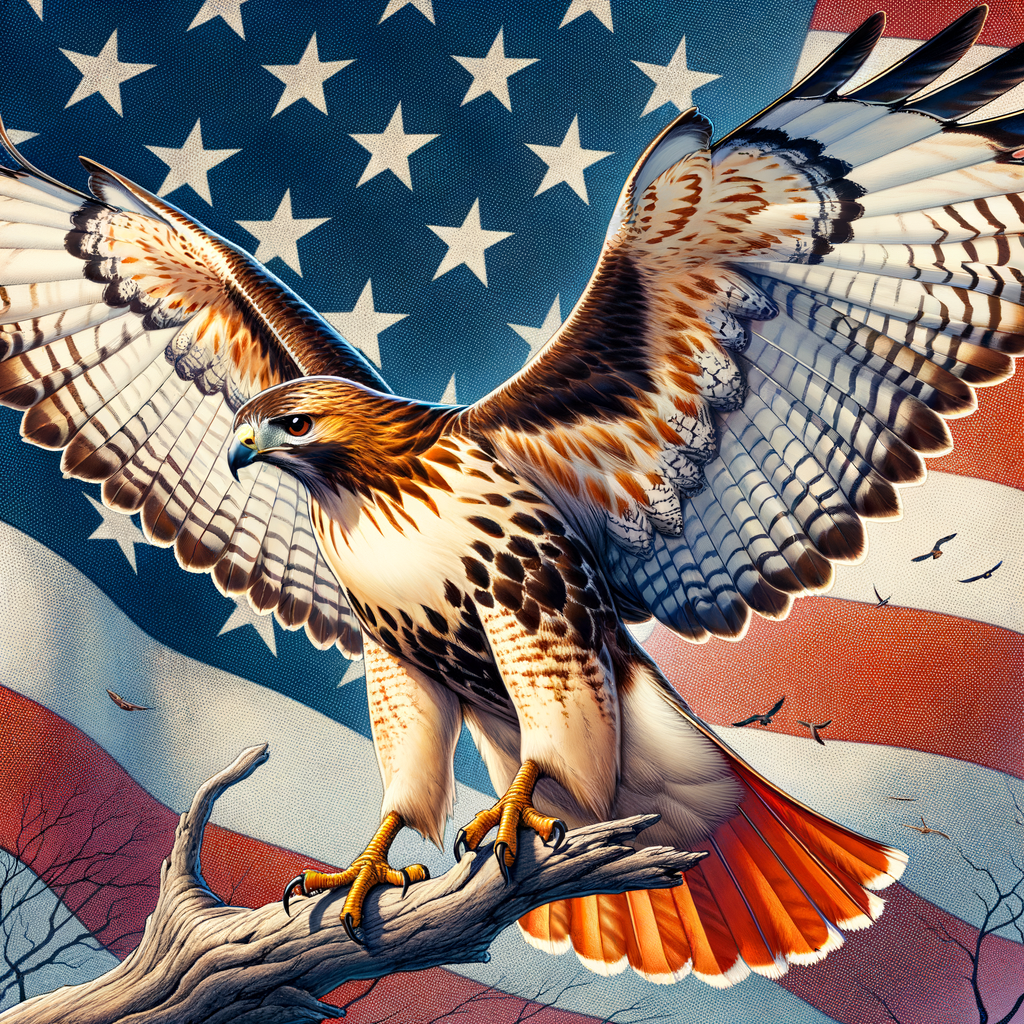Fascinating Facts About Saker Falcons
- Saker falcons are known for their incredible speed and agility.
- These birds of prey can be found in a wide range of habitats, from Europe to Asia.
- Traditionally, saker falcons have been admired for their hunting skills.
- They are powerful hunters, capable of catching prey mid-flight.
- Saker falcons are one of the largest falcon species, making them formidable predators.
- They have distinctive plumage that can vary in color, making each bird unique.
- These falcons play a significant role in their ecosystems by controlling the populations of smaller animals.
- Saker falcons have a strong bond with falconers, who train them for hunting and conservation purposes.
Learn more about these amazing birds and explore the thrilling world of falconry with Learn Falconry!
Discovering the Mystique of Saker Falcons
Imagine you’re walking through the lush, green hills of Ireland. The wind is whistling through the ancient trees, and you spot a leprechaun darting behind a stone. Just as the leprechaun holds secrets of Irish folklore, the saker falcon holds the mysteries of the skies. At Learn Falconry, we invite you on an enchanting journey to uncover the secrets of this majestic bird.
The saker falcon is no ordinary bird’its beauty, power, and grace have made it a legendary creature across many cultures. You may be wondering, “Why should I learn about the saker falcon?” Well, much like discovering the pot of gold at the end of a rainbow, learning about these falcons can bring a sense of wonder and awe into your life.
In this article, we’ll unravel the fascinating world of saker falcons, exploring their unique characteristics, their vital role in ecosystems, and how they captivate the hearts of those who encounter them. Stay with us, and you’ll soon understand why these incredible birds are worth your attention. This is a tale as mesmerizing as a story told by the fireside on a chilly Irish evening. So grab a cup of tea, get cozy, and let’s dive into the compelling world of saker falcons together.
Understanding the Saker Falcon Species and Its Role in Falconry
Introduction
Hey there, curious minds! Today, let’s dive into the fascinating world of the saker falcon, a majestic bird that’s a big deal in falconry. These birds are not just impressive hunters but also have a lot of history and importance in the world of falconry. Ready to learn more? Let’s get started!
What is a Saker Falcon?
The saker falcon (Falco cherrug) is one of the largest falcon species in the world. They are known for their size, strength, and impressive hunting skills. Found mostly in Central Europe, Asia, and Africa, these birds have a vast range of habitats, including deserts, savannas, and grasslands. They are known for their powerful, fast flight and incredible agility.
Saker Falcon Species: Characteristics and Behavior
The saker species is known for its broad wings and long tail, making them excellent at soaring and gliding. They have a robust body and large feet, allowing them to catch and hold onto their prey effectively. Their plumage varies from pale brown to a darker, more reddish-brown, often with streaks and spots.
Saker falcons are fearless hunters. They primarily feed on small mammals and birds, using their keen vision to spot prey from a distance. They are also known to be very territorial and can be quite aggressive when defending their nests.
The Art of Saker Falconry
Saker falconry has been practiced for centuries, especially in the Middle East and Central Asia. Falconry is the sport of hunting with falcons and requires a deep understanding of the birds’ behavior and needs. Saker falcons are particularly valued for their hunting abilities, making them a popular choice among falconers.
If you’re interested in learning more about falconry techniques, you can check out this page. Falconry involves a lot more than just letting the bird fly; it requires proper training, care, and equipment.
Training a Saker Falcon
Training a saker falcon takes time and patience. It starts with building trust between the falconer and the bird. Falcons are trained using positive reinforcement, which means they are rewarded for good behavior. This can be done with food or other rewards. For detailed training methods, you might find this resource helpful.
One essential part of training is recall training, where the falcon learns to come back to the falconer when called. This is crucial for hunting as it ensures the falcon returns after a successful hunt.
Falconry Equipment for Saker Falcons
Using the right equipment is vital in saker falconry. This includes hoods, which help keep the falcon calm, jesses (straps) for controlling the falcon, and perches for resting. For a full list of necessary equipment, take a look at falconry equipment.
The History of Saker Falconry
The relationship between humans and birds of prey dates back thousands of years. The art of saker falconry has been passed down through generations, with skills and techniques evolving over time. Learning about the history of falconry gives us insight into how this ancient practice has shaped the human-bird bond.
Conservation and Ethical Falconry
Practicing falconry ethically is essential for the well-being of the birds and the preservation of their species. Conservation efforts are critical to ensure that falcon species like the saker falcon continue to thrive in the wild. To understand more about the role of falconry in conservation, visit our conservation section.
Taking Care of Your Saker Falcon
Proper nutrition and health care are essential for maintaining a healthy falcon. Saker falcons require a diet that mimics what they would eat in the wild, including small mammals and birds. Learn more about falcon health and nutrition on our dedicated page.
Joining the Falconry Community
If you’re new to falconry or want to meet more enthusiasts, joining a falconry club or group can be very beneficial. These communities provide support, education, and camaraderie. Check out our guide to joining a falconry club.
Remember, falconry is not just a hobby; it’s a commitment. Ensuring the well-being of your falcon and practicing ethical falconry are paramount. If you’re eager to dive deeper into the world of falconry, we have plenty of resources and expert advice available at Learn Falconry. Happy flying!
Fascinating Facts About the Saker Falcon
Welcome to the exciting world of Saker Falcons! In this article, we explore some critical aspects of one of the most intriguing birds of prey. Get ready to learn about their population trends, physical characteristics, habitats, and conservation efforts!
Population Trends of Saker Falcons
The Saker Falcon has faced a dramatic decline in population:
| Period | Decline Percentage |
|---|---|
| 2002-2021 | 44.6% |
| Three Generations | 50-79% |
From 2002 to 2021, their numbers have seen a significant drop, and the outlook over three generations is even more concerning.
Conservation Status and Efforts
Conservation Status
The Saker Falcon is classified as Endangered by the International Union for Conservation of Nature (IUCN). The primary reasons for their decline include:
- Electrocution from power lines
- Unsustainable capture for falconry
- Habitat degradation
- Impact from agrochemicals
Conservation Efforts
To combat these challenges, several initiatives and programs have been launched:
- Saker Falcon Global Action Plan (SakerGAP): This plan, which spans from 2015 to 2024, aims to reverse the population decline by implementing various strategies.
- Captive Breeding Programs: Facilities like the Green Balkans Wildlife Rehabilitation and Breeding Centre are working to breed Saker Falcons in captivity and reintroduce them into the wild.
Physical Characteristics
The Saker Falcon is a medium-sized bird of prey with some impressive stats:
| Attribute | Measurement |
|---|---|
| Body Length | 43-60 cm |
| Wingspan | 104-135 cm |
| Weight | 730-1150 grams |
| Lifespan (Wild) | 18-20 years |
| Lifespan (Captivity) | Up to 30 years |
Habitat and Distribution
The Saker Falcon can be found across a diverse range of environments:
- Regions: They inhabit areas from Eastern Europe to Western China.
- Habitats: Arid environments, wooded steppes, and foothills.
Regional Population Examples
In Kazakhstan, the population has experienced a drastic decrease:
| Year | Decrease Percentage | Breeding Pairs |
|---|---|---|
| 1990-2012 | 73-79% | Less than 650 |
In contrast, Hungary has seen recovery due to dedicated conservation efforts:
| Period | Breeding Pairs Increase |
|---|---|
| 1980s | Around 10 pairs |
| About 2024 | Around 150 pairs |
Unique Behavior and Diet
Saker Falcons are powerful hunters! They prey on a variety of ground-living animals, including:
- Mammals
- Birds
- Reptiles
By adapting to different prey types, they maintain a vital role in their ecosystems.
Impressive Conservation Achievements
Various conservation projects have made significant strides:
Reintroduction Programs: Initiatives like the “Saker Falcon Reintroduction in Bulgaria” have successfully bred and released numerous falcons back into their natural habitats.
Recognition and Funding: In 2024, the Saker Falcon was named Bird of the Year by the Hungarian Ornithological and Nature Conservation Society, bringing much-needed attention to their plight.
By shedding light on the remarkable Saker Falcons, we hope to inspire more people to understand and protect these magnificent birds. Stay tuned for more interesting tidbits and conservation success stories!
The Importance of Protecting Saker Falcons
The Saker Falcon is facing some tough challenges, but there is hope for its future. This majestic bird, found across the Palearctic region from Eastern Europe to Western China, is currently classified as “Endangered” due to a rapid decline in its population. Over the past several decades, its numbers have dropped significantly, largely due to human activities like electrocution, unsustainable capture for falconry, habitat destruction, and harmful chemicals.
But not all is lost. Various conservation efforts are being put in place to help this species bounce back. Programs like the Saker Falcon Global Action Plan (SakerGAP) and specific reintroduction projects in countries like Hungary and Bulgaria are making a difference. These initiatives involve creating safer nesting places, breeding falcons in captivity, and protecting them in the wild.
The goal is to reduce their population decline and eventually increase their numbers. In some areas, these efforts are already showing positive results, like the increase of breeding pairs in Hungary. Recognizing the Saker Falcon as the Bird of the Year in 2024 by conservation societies also highlights the importance of protecting these birds.
By learning about and supporting these efforts, we can all play a part in ensuring the Saker Falcon remains a part of our world for generations to come. Together, we can help these incredible birds soar high once again.



